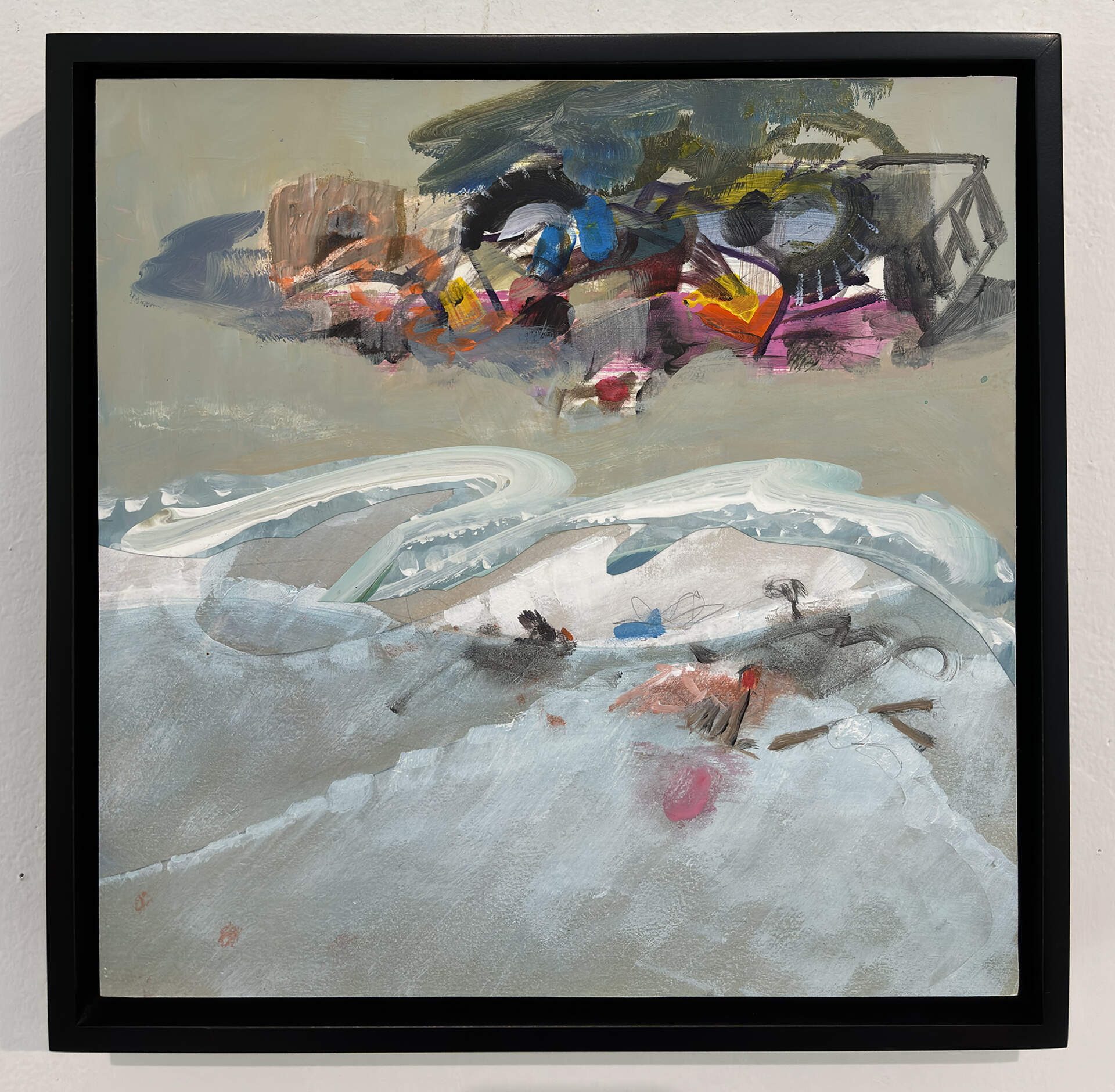Mike Glier (b. 1953)The Ocean Depositing Trash
2023
paper collage and acrylic mounted on panel
12 x 12 inches
Courtesy of Krakow Witkin Gallery, Boston
VIOLATION
MG: Nancy, you once wrote about Still Life-Scrap Iron, “Burchfield transforms discarded industrial material into a composition of unexpected beauty.” I agree with your assessment. The rusty pipes and kettles have a satisfying heft and surface, qualities that Richard Serra put to use. But in light of “critique or optimism,” a thread in our discussion, this picture uses attractiveness to land a critique. The volume of disposed metal, piled into a small mountain, is clearly an image of waste. Rusty steel is not at all reflective, so it is safe to say that Burchfield strayed from realism and used white highlights on the rust to exaggerate the volumes in order to dramatize the amount of discarded material, which itself pushes against the fence as if to overflow into a cleaner place. True to Burchfield, the clouds loom in the back like the chorus in a slow-moving tragedy.
NW: You make a good point about rusty steel not being reflective, but I think Burchfield was painting in a transparent watercolor tradition for this work, leaving white to show the glare of the sun. He also left a section of ground colorless when it surely would have been grimy. By making it aesthetically pleasing, like you say, he draws the viewer in to recognize the scale of this scrapyard pyramid, especially when you compare its scale with the fence and telephone poles. Smell the acrid air. Clouds picked up the dust. And yet he couldn’t resist adding a few wisps of grass, struggling to find a place to survive. He created this 94 years before your painting, Ocean Depositing Trash. Both paintings carry a rebuke for human violation of the land. You use color and sweeping ocean waves breaking on shore to entice viewers to take notice of the accumulation of detritus that keeps on returning. How tragic that we’re caught in a never-ending pollution dilemma of our own making.
MG: Ocean Depositing Trash is a response to a visit to one of the Bahama islands, where the north shore was inundated with plastic crap; tide after tide depositing yet another layer of debris. It’s fitting that the ocean delivers a small portion of waste back to us, as if it is a diligent volunteer environmentalist who relentlessly keeps the issue front and center or a mom on repeat saying, “Clean up your own mess!”
